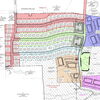Processing Your Payment
Please do not leave this page until complete. This can take a few moments.
- News
-
Editions
-
- Lists
-
Viewpoints
-
Our Events
-
Event Info
- Women's Leadership Forum 2025
- On the Road with Mainebiz in Bethel
- Health Care Forum 2025
- On The Road with Mainebiz in Greenville
- On The Road with Mainebiz in Waterville
- Small Business Forum 2025
- Outstanding Women in Business Reception 2025
- On The Road with Mainebiz in Bath
- 60 Ideas in 60 Minutes Portland 2025
- 40 Under 40 Awards Reception 2025
- On The Road with Mainebiz in Lewiston / Auburn
- 60 Ideas in 60 Minutes Bangor 2025
Award Honorees
- 2025 Business Leaders of the Year
- 2024 Women to Watch Honorees
- 2024 Business Leaders of the Year
- 2023 NextUp: 40 Under 40 Honorees
- 2023 Women to Watch Honorees
- 2023 Business Leaders of the Year
- 2022 NextUp: 40 Under 40 Honorees
- 2022 Women to Watch Honorees
- 2022 Business Leaders of the Year
-
-
Calendar
-
Biz Marketplace
- News
- Editions
- Lists
- Viewpoints
-
Our Events
Event Info
- View all Events
- Women's Leadership Forum 2025
- On the Road with Mainebiz in Bethel
- Health Care Forum 2025
- On The Road with Mainebiz in Greenville
- On The Road with Mainebiz in Waterville
- + More
Award Honorees
- 2025 Business Leaders of the Year
- 2024 Women to Watch Honorees
- 2024 Business Leaders of the Year
- 2023 NextUp: 40 Under 40 Honorees
- 2023 Women to Watch Honorees
- 2023 Business Leaders of the Year
- + More
- 2022 NextUp: 40 Under 40 Honorees
- 2022 Women to Watch Honorees
- 2022 Business Leaders of the Year
- Nomination Forms
- Calendar
- Biz Marketplace
Maine Startup & Create Week: Social media becomes hub for food distribution
 PHOTO / COURTESY Healthy Acadia by photographer Brendan Bullock
Hannah Semler (standing), gleaning coordinator at Healthy Acadia, a nonprofit food redistributor, plays with spinach while Gleaning intern Katrina Fennelly (middle) and AmeriCorps VISTA Christina Fortin (left)
look on at the Four Season Farm in Harborside.
PHOTO / COURTESY Healthy Acadia by photographer Brendan Bullock
Hannah Semler (standing), gleaning coordinator at Healthy Acadia, a nonprofit food redistributor, plays with spinach while Gleaning intern Katrina Fennelly (middle) and AmeriCorps VISTA Christina Fortin (left)
look on at the Four Season Farm in Harborside.
Social media platforms are opening up new markets for farmers, providing traceability for food, helping identify surplus food for redistribution and giving consumers a forum to learn more about drinks and edibles.
Panelists in the “Farm to Fork 2.0” session at Maine Startup & Create Week Wednesday talked about using social media and the Internet to bring efficiencies to food distribution.
“We want to decrease the 50% of time and money wasted in the agriculture business supply chain and increase the chance to connect with small players,” said Riana Lynn, founder of Chicago-based supply chain management tool company FoodTrace.
The company is creating software to better connect customers and their main buyers in the supply chain.
Culling information
Social media is everything in this market, said Carla McKay, founder of Crushed.com, a San Francisco-based social media wine application that helps consumers learn more about wines.
“It’s how you differentiate yourself. It’s how you brand yourself,” she said. “We want to have a conversation with consumers. And we collect data, for example, women don’t want to spend more than $15 for a bottle of wine when they go out dining during the week, whereas millennials have no limit.” That information can be valuable to wine companies, she added.
The company uses both a mobile app and its website for provide information on wines and where they originate.
Knowing food sources
Technology can help with food traceability, noted Jared Auerbach, founder of Red’s Best, a Boston-based seafood management company that works with small- to medium-sized fishing boat owners on the New England coast.
Red’s Best gives software to fishermen, and runs a service that tracks catches and sales in real-time via its trucks at wharfs.
“My software reduces redundant data entry,” Auerbach said. He said he expects to handle 500 transactions when striped bass season opens Thursday. The system’s inventory can be used to handle settlements, government paperwork and other business.
“This data has tremendous value,” he said. “I sell wholesale to restaurants. We have a traceability label with all information in a QR code about every fish on every day.”
Cutting food waste
Food waste and redistributing excess food from farms and elsewhere is another issue where technology can help, according to Hannah Semler, gleaning coordinator of Healthy Acadia in Ellsworth. The nonprofit works with a group of 30 small farms in Downeast Maine to take their extra food to different food pantries.
The company on Aug. 1 plans to launch a partnership with LeanPath food waste tracking technology to automate manual documentation of food donations from food businesses, Semler said in an email to Mainebiz after the conference.
EDITORIAL NOTE: The comments by Healthy Acadia have been changed from a previous version to clarify its partnerships.










Comments